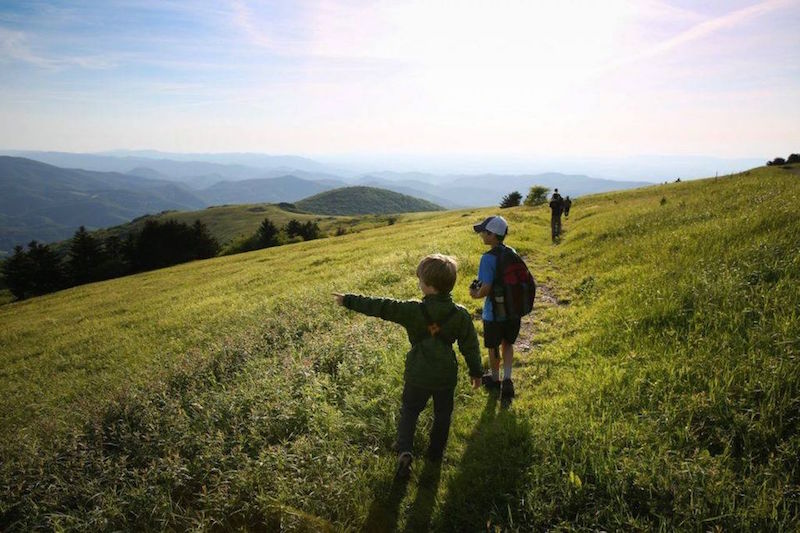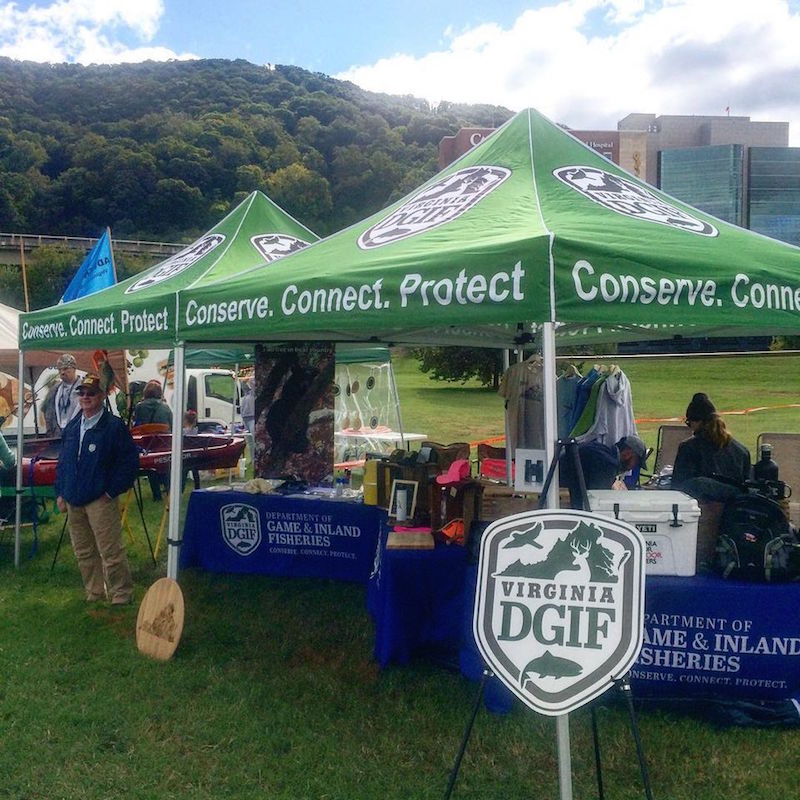Bowhunters like you help conserve wildlife and wild places every time they buy a hunting license, or a bow, arrows and broadheads.
You’re one big reason North America has beautiful landscapes and abundant wildlife. To learn more about bowhunting’s enduring contributions to conservation, we spoke with Ryan Brown, executive director of the Virginia Department of Wildlife Resources.
Brown said bowhunters support conservation three primary ways:
The first two actions help fund state wildlife agencies’ conservation projects, and the third helps the environment by directly managing wildlife populations.

Hunting license sales help fund conservation research so that future generations can enjoy the land. Photo Credit: VDWR
State wildlife agencies like the VDWR rely on two funding sources: hunting and fishing license fees; and federal excise taxes on firearms, ammunition, and designated fishing tackle and archery gear.
License-sales dollars go directly to the state agency selling the license. These excise taxes originated in the 1937 Wildlife Restoration Act, aka the Pittman-Robertson Act. The act requires manufacturers to pay a 10% to 11% tax on specified equipment sales. The IRS collects revenues generated by the FET, and sends the money to the U.S. Fish and Wildlife Service, which allots it to wildlife agencies based on their state’s geographic size and hunting/fishing populations. Fishing manufacturers pay a similar FET through the 1950 Dingell-Johnson Act.
Revenues from license and equipment purchases help state agencies pay for conservation projects such as habitat restoration, hunter education, wildlife research, law enforcement, and public access.
“Hunters and anglers are the financial backbone for what [state agencies] do,” Brown said. In fact, the nation’s archers and bowhunters generated over $49 million during the 2017 federal fiscal year, nearly $51 million in 2016, and just over $57 million in 2015, according to data tracked by the Archery Trade Association.
Bowhunting, of course, does more than fund state wildlife agencies. It also provides outdoor recreation for millions while helping agencies manage the states’ wildlife.
“Without hunting as a management tool, our game species would be unchecked,” Brown said. “That can be detrimental to their populations, the environment, and the ‘cultural’ carrying capacity.”
Brown defines cultural carrying capacity as how much wildlife the public will tolerate. Large deer herds overbrowse habitats, decimate agriculture fields, increase the risks of vehicle collisions, and damage gardens and landscaping. Brown said hunters reduce herds and maintain healthy numbers to meet public expectations.
“Bowhunting is one of our greatest tools for managing herds, especially in suburban environments where some of our biggest deer overpopulations exist,” Brown said. “Hunters help maintain healthy herd levels to meet the public’s expectations. (Bowhunters) are also quiet, and can operate on small properties. Bowhunting is less intrusive, which makes it a key management tool.”

You can contribute to conservation efforts by bowhunting. Photo Credit: VDWR
Even though bowhunters do good things for conservation, many bowhunters don’t know their role in conservation. Brown thinks most of that disconnect is generational.
“Agencies were established about 100 years ago in response to depletions of our natural resources,” he said. “Older generations appreciate and understand what we do because they watched states work to bring back elk, deer, turkeys and bears. They experienced the connection between what state agencies do and their impact on herds.”
In contrast, Brown said many younger hunters and anglers only know about abundant wildlife. The world they know, especially with whitetails, has too many deer. Therefore, some younger hunters don’t understand the purpose of state wildlife agencies or bowhunters’ individual roles in conservation.
Brown said the mission of wildlife agencies is to manage and promote wildlife populations and provide recreational opportunities. Those agencies need support from hunters and anglers. “Without the contributions of sportsmen and women, state agencies would not exist,” he said.
That’s why states, conservation groups, and the outdoor industry are trying to educate bowhunters about their roles in conservation. They believe if people knew how important and powerful their efforts are, they might buy extra gear, introduce more friends and family to bowhunting, and do more for conservation.

Educate a nonhunter about the benefits of hunting. Photo Credit: ATA
Bowhunters already contribute much to conservation, but let’s discuss more ways you can support protect and preserve the nation’s natural resources.
“The public doesn’t care that we hunt, and they don’t care why we hunt, but they care how we hunt,” Brown said. “Every hunter out there — bowhunter or otherwise — should understand their actions are analyzed and judged by the public. Every time they step into the field or interact with the public, they need to be (hunting) ambassadors.”
That means respecting nature, ethically harvesting game, taking care of an animal’s meat and carcass, and posting tasteful hunting images online. Be mindful of how you portray hunting and wildlife. Represent responsible bowhunting.
Urbanization and mass food production long ago distanced most Americans from hunting. Although Americans support hunting (almost 80% approve, according to recent surveys by Responsive Management and the Quality Deer Management Association), they still know little about it. Brown said bowhunters should discuss hunting with nonhunters to provide honest perspectives.
“When I was a kid, there was much greater public knowledge of hunting, the purpose it served, and what it was all about,” Brown said. “Today, most of our public doesn’t know anything about hunting. I urge all bowhunters to educate nonhunters about why they hunt and how it supports conservation.”
If a nonhunter expresses interest in bowhunting, Brown suggests sharing your passion to help them get started.
“Take time to invest in others,” he said. “If conversations with nonhunters lead to an interest, cultivate it and take them to the field, introduce them to archery, and show them what it’s all about. We must make bowhunting available and accessible to all.”
More hunters and anglers mean more financial contributions to hunting, shooting and wildlife-associated recreation. Click here to learn how to be a bowhunting mentor.
Brown said conservation organizations regularly share their opinions and positions with state representatives, and fish and wildlife agency staff to encourage them to make informed conservation decisions. He said sportsmen and women must get involved.
“Wildlife management is both a biological science and a social science exercise,” Brown said. “Conservation organizations fill a tremendous role in making sure sportsmen and women are heard. We pay close attention to what they say. They’re important partners of ours, and I encourage all hunters and anglers to get involved with conservation organizations.”